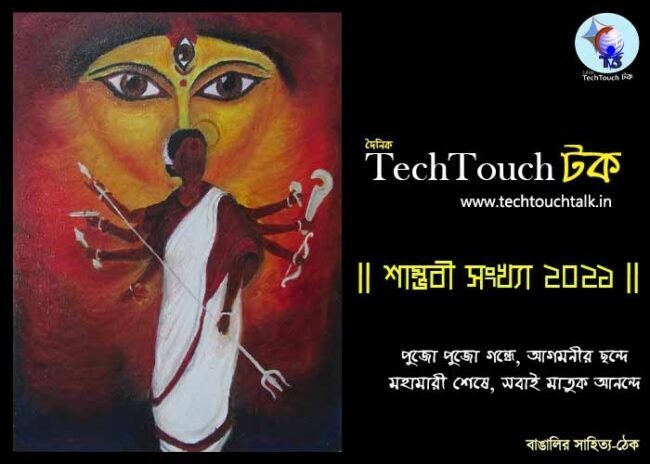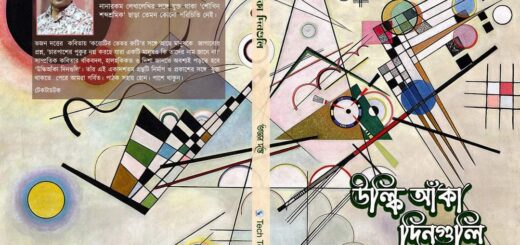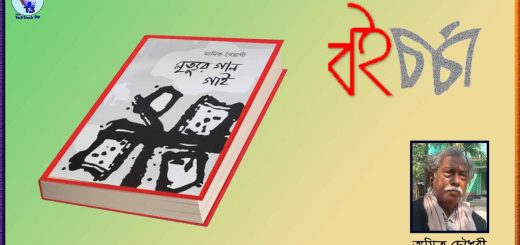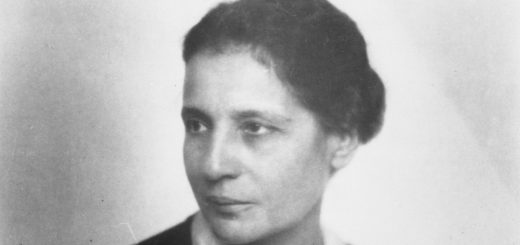T3 শারদ সংখ্যা ২০২২ || তব অচিন্ত্য রূপ || বিশেষ সংখ্যায় Inam Hussain Begg Mullick

Book reviews and comments on ‘The Magical Life of Inamorato’
The Magical Life of Inamorato – Reviews and Literary Impressions
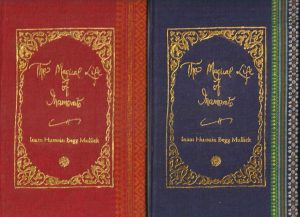
Reviews by noted colleagues in art, poets, academics and reviewers
The Magical Life of Inamorato
by Inam Hussain Begg Mullick
A Book of Poems, published by Writers Workshop
Edited by Ananda Lal Foreword by Sharmila Ray
Rs. 300
Shop at Writers Workshop, Lake Gardens, email writersworkshopkolkata@gmail.com or thekolkataarts@gmail.com
In alphabetical order
Aneek Rudra
Almost for the last two decades, I have had the opportunity to go through Inam’s poetic journey, the time when the poet used to write in The Statesman, as a Young Turk. In the course of time, Inam H. Mullick drew my attention in several ways as an Indian writer in English. At the same time, I knew of his ardent zeal for his mother tongue.
I prefer to endorse Inam’s works as that of a scholar extraordinary than a popular jaywalker’s who tries to hop with fashionable swag ignoring serious feelings and thought processes.
Poetry comes from within for Inam—their sociopolitical, emotional and psychological development—along with a deep and sensitive cultural ethos.
Anjana Basu
Inam Hussain Begg Mullick’s delicately nuanced poetry never fails to make an impact. He explores the various emotions that flit in and out of every day life, mainly the emotional entanglements that the inamorato inspires. The world has about it a plethora of dreams and enchantment that can be seen in fragments of nature and shards of sunlight. There is on occasion a self consciousness to the words and phrases that Inam inserts though that in itself lends a different style to his verse. His poetry has been making its presence felt for a fairly long time but time has added maturity to his style and subjects.
Dr. Arnab Chatterjee
Mr. Inam Hussain Mullick’s verse volume The Magical Life of Inamorato is a tour de force. As I was expecting, words flow incessantly and images mix in quick succession. The poet uses images from Nature to convey the nature of our nebulous existence. Be it his relationship with his lady-love or a rumination on the mundane, the poet writes with classical poise and with a rare combination of the heart and the intellect.
Each section within a poem tells a story. Sometimes, such micro-tales are just left unfinished for the sake of emphasis. The images are not only novel but carry the characteristic hue and charm that only Inam conjures up. The section “Libidinous Cats” talks about bizarre incidents of clouds being devoured by cats and insects worshiping the famed American short story writer Edgar Allen Poe. Thus, to read Inam’s verses here is to encounter a cornucopia of images and fine slants in language, emotion and thought. He never stops to intrigue and inspire.
Biswajit Chattopadhyay
On first reading The Magical Life of Inamorato
Sometimes you come across a water body filled with lilies and black fishes…
And people say it’s a river.
Sometimes you hear a music from God’s harmonium..
And your doctor says it’s an auditory hallucination…
Sometimes you read a few lines in your dream headquarters and later discover later that it’s actually from a book of déjà vu or architecture of brain.
The serendipity continues until your fragmented memory comes to term with your visual exploration of organic dust and religious fantasy.
That’s how I look at The Magical life of Inamorato, my journey through his centre of gravity.
Summer is not necessarily his faithful dog or donkey..
Where a melting sun pokes through his window of wisdom or other virtues and a
libidinous cat looks on.
Where an insect worships none other than Edgar Allan Poe
That is not the way how you look at Inam’s new poetry collection..
Perhaps you need a glass castle to safely read his poems and return unhurt..
Chandni Varma
The only person who truly has been a supporter of my creative abilities is you. You are my Creative Champion always encouraging me to be true to myself. Thank you for always being that person.
Hoshang Merchant
Sun pours in through the window.
an angel runs down to the earth on an errand.
The eagle lifts the veil of time and space.
a war ends with a victory of flowers.
the copper moon hangs
The copper moon hangs at the end of the corridor.
And someone sings of love so quietly.
I have taken liberties of writing cut-up lines as run-on lines. So you can see that I have taken two poems and made them into one to show how words flow in Inam’s poems from one poem to another and each poem enhances the other.
Time is a flow.
We cut it up. Religious experience, the drug experience restores the flow of life cut-off by the rational reality of the bourgeois.
Inam, a lover poet and mystic restores to us that lost World at great expense to his own sanity and social respectability.
Inam is a lover worthy of my deep affection.
Ipsita Ganguli
The Magical Life of Inamorato
“night grows
and my mind ballets between embers
and wet clouds,…”
It’s a surreal swirl of emotions induced by words beautifully flowing one to another to create an ambience of poignancy laced with thoughtfulness, that takes you to your core and far beyond, this magical book of poetry,
leaving you breathless…
“We raid
hell’s auditorium
and recover
a saxophone sunset,”
Inam Hussain Begg Mullick take a bow.
Jagari Mukherjee
MEETING YOU IN THE GARDEN OF APRICOTS: THOUGHTS ON INAM HUSSAIN BEGG MULLICK’S THE MAGICAL LIFE OF INAMORATO
The poems between the gorgeous green-gold covers of Inam’s “The Magical Life of Inamorato” transported me to a silver summer in a garden of apricots cultivated by the poet. Inam weaves an exquisite brocade tapestry with his magical words, with soft filigree work on the borders.
However, the poems do not merely comprise beautiful words, but encompass variegated themes like anti-fascism, anti-Zionism and anti-ethnic discrimination, which exist alongside deeply tender love poems and works of a profoundly spiritual nature. One may take the example of a poem that grieves over “the treachery of humankind” and contrasts the peace of heaven “In another age,/ the blessed Zamzam/had sprung forth/from the heels of Ishmael,/ to quench the thirst/of mother and son.” The narrator calls out in despair: “What have we done?” Ultimately, Peace is the outcome of love from the personal to the universal. As the narrator meets his beloved, they exchange “moons, our souvenirs/for lonelier days.”
Inam’s predecessors are the Great Modernists, yet there is an impeccable Sufi touch to his poetry. This can be best illustrated by taking this imagery :
“The copper moon hangs
at the end of the corridor
and someone
sings of love,
so quietly
My personal favorites are, by dint of a natural partiality, the poems that Inam had dedicated to me. The first one, “A Nocturne for Inamorata” paints a landscape of surreal proportions, where the reader is greeted by the alliterative music of “moondust mansions and mulberry orchards.” Yet, even in conversation with his beloved, the narrator never forgets the real in the midst of the ethereal: “Among this scented tea/and wine, let’s speak of love,/art and religious warfare.” The second poem “Nocturne II” continues to construct the dreamscape, as during a kiss, the poet’s body “unburies earth fountains”, and the beloved’s shoulders sprout “wild scented leaves.” The third poem, a quatrain, reveals that Inam is equally at home with free verse and with rhymed measures. Indeed, his compositions reveal an astonishing breadth and range in terms of form and craftsmanship, where he has applied couplets (rhymed and otherwise), quatrain, haiku, translation, ekphrastic and ghazals.
Inam lists Lorca and Agha Shahid Ali amongst his favorite poets, but his own genius is revealed to us in this collection. His poems embrace the colors of both Impressionist and Expressionist paintings, and there are no borders in the land of his creativity.
Long after I had closed the book, I remained in a state of enchantment. “The Magical Life of Inamorato” is an experience of several lifetimes.
Lahari Chatterji Mahalanabish
The Magical Life of Inamorato is a banquet of words and their varied associations. With references to mythology and religious texts, the poems challenge the reader to think beyond the obvious, to read beneath the confluence of words that might appear unrelated in the first reading. Some of the poems allude to world affairs and politics, suffused in the poet’s concern for humanity. Some of them emphasise the pathos and also the headiness of love. There is a tantalising sense of mystery around the verses, the phrases are like shadowy alleyways to some distant past or unforseen future. It is a collection that demands our attention, a book that opens up new meanings and dimensions.
Naina Dey
One look into the magical life of Inamorato and you know Inam can shock you with ‘Dead pigeons’ lazing in the courtyard, or fill you with surging desires when lovers hold on to each other and kiss under a war-torn sky. Romeo sings to Juliet in “A libidinous cat” knowing full well the chaos of the disoriented mind that forgets history in an ecologically dystopian world:
a city
drenched in platinum
is your recent address,
your lips
the shade of an easy gree,
…
all is not lost,
Juliet,
in our underground opera
of contraband songs,
the blade of love
cuts less.
“The ocean blinks” is a critique on changing times – of the difference between the natural and human worlds. On the other hand, ‘I am enslaved/ by the blue night/ of your armpits’ (“I am enslaved”) could have been a Gaugin or Picasso and shorter poems like the optimistic “The sun pours in through the window” and “The copper moon hangs” are filled with the intensity of passion and music and a celebration of the senses. While breaking the rubrics of conventional imagery in lines that run on thus: ‘the debris/of my life/have grown eyes,/ during the civil war’ (“The Ocean Blinks”) reminding the critic of Picasso’s Guernica, there are moments when the poet makes the mundane and spiritual coalesce like the Pre-Raphaelite Rossetti: ‘an angel runs down/ to earth/ on an errand’ (“The sun pours in through the window”). However, Inam is most earnest when he sings of love in “I drink of the cup of monsoon” or “You said I smelt of dusk”. But in a longer poem like “Inamorato Travels Through the Seasons and Thunderstorms”, the poet juxtaposes the abstract with the concrete to convey the reality about the unpredictability of love itself:
Writing a love poem
is like building a home
or a palace brick by
brick,
stone by
stone,
metal by
metal,
for someone who may not live there
Inam’s sentences are fragmented and in their brevity, like abrupt knife strokes flinging pellets of colour on a canvas, together building up a larger image reminding us of the deeply involved poetry of Helene Johnson or an irreverent Robert Pinsky. Inam puts his unique stamp in evoking out-of-the-way images in lines as
the stars will come out soon
and the pottery
of light
will resume
in
this hot month’s
garden
Short, irregular line lengths are carriers of cryptic messages besides technically making reading easier.
Animals and birds become markers of human fears, emotions and even self-awakening:
A libidinous cat
eats
the night clouds,
an insect worships
Edgar Allan Poe
-fears and libido coalescing – while lovers watch ‘a wicked star’. In contrast, ‘the sparrow grandmother’s/ afternoon stories’ offer stability within the chaos until the horror of strife and mundaneness is eclipsed by the ultimate awakening: ‘the eagle/ lifts the veil/ off time and space’.
The poet uses wry humour to express his despair at his failure to rationalize, to distinguish between lies and truth for that is what humans have been fed on for years – half-truths: ‘my sense of history/ crashes,/ who won the battle of Plassey?’ or ‘the job market/ crashes/ into the teapot’ and ‘the cat is on/ whisky.’
But there is also a streak of optimism and the love for love and life – reminding one of Arnold’s “Dover Beach”:
Our eyes remember
the rhythm of swans,
We dance.
It rains again, miraculous delicate prayers.
In robust hearts, we dance.
(“I drink of the cup of monsoon”)
or the poet may utter “love is rain on leaves” (Inamorato Travels…”). Poems titled “Amorino Breathing”, “Poem” and “Haiku” use unusual images which by now seem Inam’s unique signature.
“An Unhinged Couplet” is an experiment with rhyme, crazily abnormal line lengths and almost unrealistic images: ‘you gently prune solar leaves in meadows of clay orisons’, once again juxtaposing the fanciful with the real.
In fact, as we catch glimpses of the magical life of Inamorato we realize how similar they are to the works of Kahlil Gibran, Neruda and Rumi. Yet, as a veteran poet and writer, Inam’s third book of poems makes a niche of its own through the twists and turns of the subconscious which only a deep sensitivity can initiate. In short, The Magical Life of Inamorato is definitely a rewarding read.
Ritamvara Bhattacharya
Your poems are phenomenally beautiful. It is a great piece of art — a connoisseur of an artist. I enjoyed the poems. It struck me deep somewhere.
Inam Hussain Begg Mullick is a poet, seer and mystic.I am in awe of his book, ,’The Magical Life of Inamorato.’ its fabricated images, its hushed sensibilities and above all his understanding of life, literature and bliss.
Here is a slice of his poems:
“The copper moon hangs”
The copper moon hangs
at the end of the corridor,
and someone
sings of love,
so quietly.
This is one of the greatest books by Inam Hussain Begg Mullick that I have come across recently. The praise is not because there is a linked group anywhere. It is because ‘Art’ is worshipped in this book. The book is diverse in its portrayal of art. It is limitless without being coerced to its manifold depictions.
Sanjukta Dasgupta
Inam Hussain Begg Mullick’s third book of poems The Magical Life of Inamorato is a fascinating postmodern collage of word-play that juxtaposes cultural metaphors among markets of poison and puzzles. These deeply reflective poems that problematize Edmund Spenser’s Amoretti, linking and delinking the assertions of Inamorato, with phonetic affiliations to the poet’s own name, are indeed remarkable and often outstanding. Inam is a young talented poet, a logophile who is immersed in the magical worlds that words alone can create.
Swati Chawla
Inam’s poetry is profilic with opposites—there is great devastation, loss and grief, yet that moment markedly defines extreme ecstasy, passion and elation.
Reading him now, after a few years, I find him elevated to a higher degree of spiritual behaviour. He is not pedantic or speaking off his higher ground, but extremely grounded. He packs some complex, composite emotions within a unique form where a ballad can be Bougainvillia, moon copper, songs contraband and winds carmine.
And yet when he simply speaks of ‘singing love songs quietly’, you just, quietly, understand.
Taniya Chakraborty
খুব ভাল লেগেছে ইনাম, এত সুন্দর লিখেছ, প্রত্যেকটা লেখা আমাকে খুব ছুঁয়ে গেছে। ক্যারিন মারিয়া বয়ী— ওর লেখা পড়ছিলাম
তোমার লেখা আর ওঁর লেখার গঠন, শব্দচয়ন ও ভাবনা অনেকটাই আলাদা কিন্তু ভাবগত এক দৃঢ়তায় খুব মিল…আমি অনেক আগে ওঁর লেখা পড়েছি নিজের জীবনের এক তীব্র অস্তিত্বসংকট থাকার পড়েও ওঁর কবিতার দৃঢ়তা অবাক করার…তোমার কবিতায় সেই দ্বন্দ্বহীন ভাব আমাকে অনেক খানি ভাল লাগা দিয়েছে…তোমার ভবিষ্যতের লেখার দিকে তাকিয়ে রইলাম….


